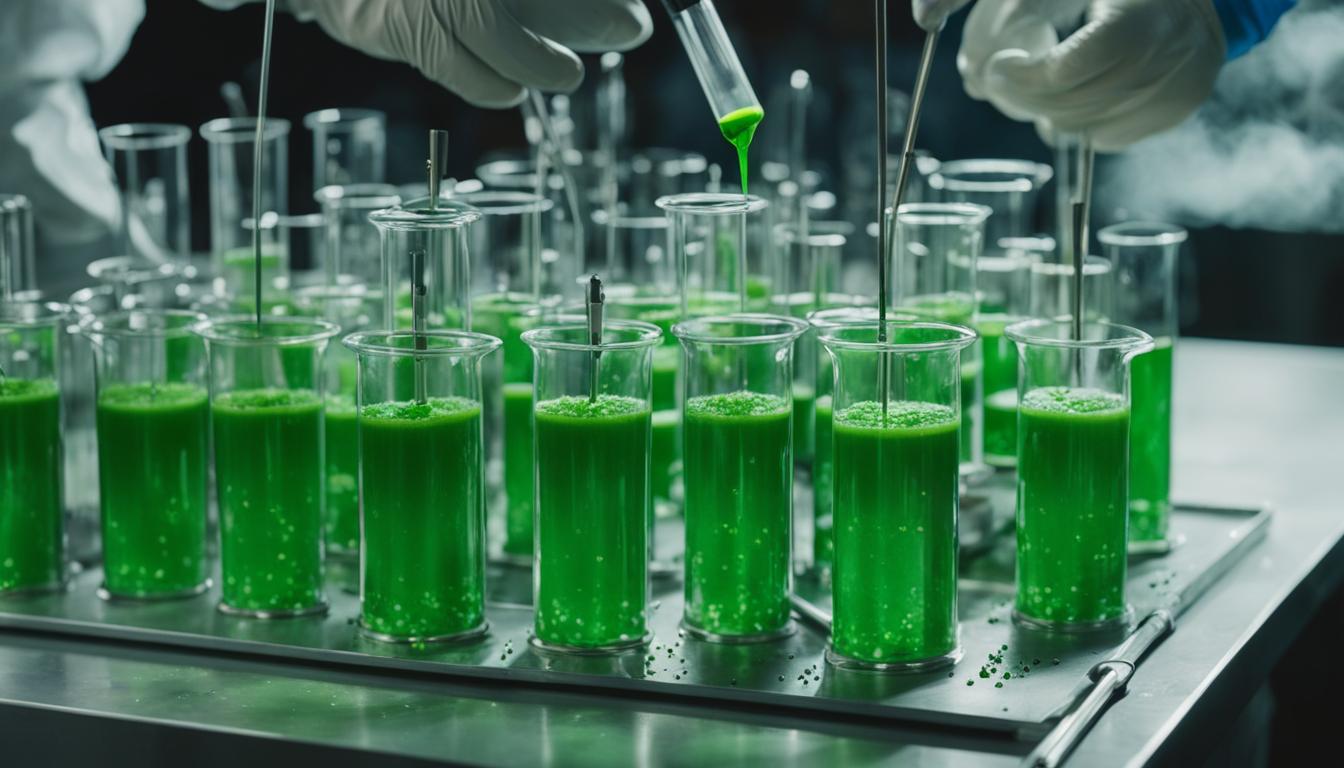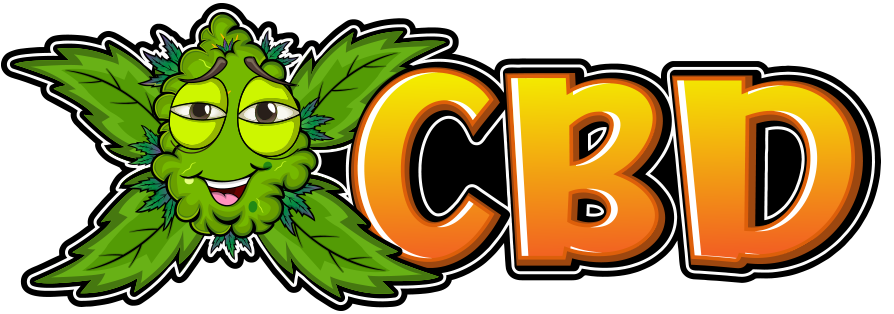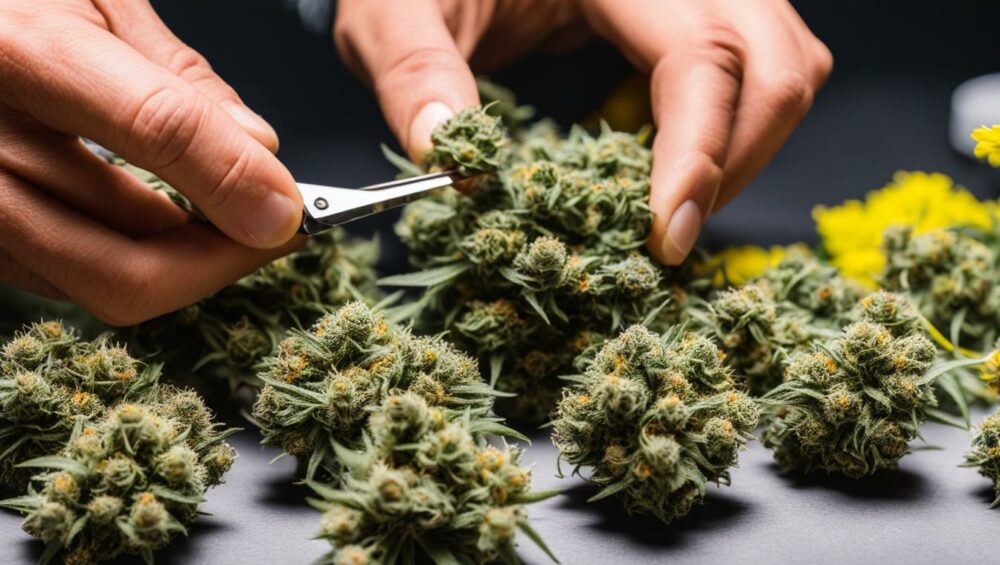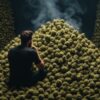Welcome to a world where nature’s finest offering meets meticulous craftsmanship. In this article, we delve into the fascinating process behind creating CBD flower, a pinnacle of quality and potency. From the seed to the final product, every step is carefully undertaken to ensure an exceptional experience for CBD enthusiasts.
Curious about how CBD flower is made? We’ll guide you through each stage of the process, shedding light on the artistry and dedication that goes into its creation. So, let’s embark on a journey that unveils the secrets behind crafting CBD flower that stands above the rest.
Before we dive into the details, let’s briefly define CBD flower. CBD, short for cannabidiol, is a natural compound found in the cannabis plant. CBD flower refers to the buds of the plant that are carefully cultivated, harvested, and processed to extract the cannabinoid goodness they hold.
Now, let’s explore the intricate steps involved in creating CBD flower, from cultivation to extraction, refinement, and everything in between. By gaining insight into this process, you’ll gain a deeper appreciation for the remarkable product that is CBD flower.
Cultivating the Cannabis Plant
Successful CBD flower production begins with the cultivation of the cannabis plant. It is a delicate and meticulous process that requires attention to detail and careful management of various factors. From selecting the right CBD strains to ensuring optimal growing conditions, every step plays a crucial role in producing high-quality CBD flower.
Selecting High-Quality CBD Strains
The first step in cultivating the cannabis plant for CBD flower production is choosing the right strains. CBD-dominant strains, such as Charlotte’s Web or ACDC, are preferred for their high CBD content and low THC levels. These strains are specifically bred to maximize CBD production and minimize psychoactive effects. By selecting the right CBD strains, growers can ensure a potent and non-intoxicating end product.
Choosing the Right Grow Media
Grow media, such as soil or hydroponics, provide the necessary nutrients and support for the cannabis plant to thrive. Soil-based cultivation offers a natural medium for robust plant growth, while hydroponics allows for precise control over nutrient delivery and water uptake. Each grow media has its advantages and considerations, and growers choose based on their expertise and desired cultivation approach.
Providing Optimal Lighting
Proper lighting is essential for cannabis plant growth and CBD production. Full-spectrum LED lights or high-pressure sodium (HPS) lights are commonly used to provide the necessary light spectrum for photosynthesis and CBD synthesis. Growers carefully monitor lighting schedules and adjust intensity to promote healthy plant growth and maximize CBD content.
Maintaining Appropriate Temperature and Humidity Levels
The cannabis plant requires specific temperature and humidity ranges for optimal growth. Typically, temperatures between 70-85°F (21-29°C) and humidity levels between 40-60% are ideal during the vegetative stage. During the flowering stage, temperatures around 65-80°F (18-27°C) and humidity levels around 40-50% are favorable. Maintaining these conditions helps prevent mold and pests while supporting healthy plant development.
Harvesting and Curing at the Right Time
Timing is crucial when it comes to harvesting the cannabis plant for CBD flower production. Harvesting too early may result in low CBD content, while harvesting too late may lead to an increase in THC levels. Growers carefully monitor the trichomes, the resin-filled glandular structures on the flowers, to determine the optimal harvest time. The trichomes should be milky white with a hint of amber, indicating peak CBD production. After harvest, the flowers undergo a curing process to enhance the CBD content and develop desirable flavors and aromas.
Harvesting and Drying the Flowers
The CBD flower production process continues with the crucial stages of harvesting and drying the flowers. Harvesting plays a vital role in ensuring the optimal CBD content and overall quality of the flower. This meticulous process involves hand-harvesting the flowers when the trichomes, the small resinous crystals on the bud, reach their peak.
Trichomes are the treasure troves of cannabinoids and other beneficial compounds that give CBD flower its therapeutic properties. When the trichomes turn milky white with a hint of amber, it indicates that the flowers are ripe and bursting with potent cannabinoids such as CBD.
Hand-harvesting is a delicate technique that minimizes stress on the plant and preserves the integrity of the trichomes. By carefully removing the flowers from the plant, growers can ensure the trichomes remain intact, preserving the maximum CBD potency.
Once the flowers are harvested, the next step is to dry them. Drying is essential to remove excess moisture from the flowers, preventing the growth of mold and preserving the flower’s quality. The flowers are carefully arranged in a ventilated, temperature-controlled room, allowing air to circulate and moisture to evaporate. This process, which can take several days to a week, ensures that the flowers are dried evenly.
After the initial drying phase, the flowers undergo a curing process. Curing is a slow and controlled process that allows the flower to develop its final aroma, flavor, and cannabinoid profile. During this phase, the flowers are placed in sealed containers, which are periodically opened to release any built-up moisture. Curing can take several weeks, allowing the flower to reach its full potential.
The combination of proper harvesting and meticulous drying and curing techniques ensures that the CBD flower retains its potency, aromatic characteristics, and therapeutic benefits, making it a valuable and sought-after product.
Extracting CBD From the Flowers
Once the CBD flowers are dried and cured, the next step is to extract the CBD from the plant material. Various extraction methods can be used to obtain the CBD compound, each with its own advantages and considerations.
CO2 Extraction
CO2 extraction is one of the most widely used methods for extracting CBD from flowers. This process involves using supercritical carbon dioxide to separate the cannabinoids and other beneficial compounds from the plant material. Supercritical carbon dioxide acts as a solvent, penetrating the plant material and extracting the desired cannabinoids without the need for potentially harmful chemicals. The extracted CBD is then separated from the carbon dioxide, resulting in a pure and potent CBD extract.
Olive Oil Extraction
Olive oil extraction is a simple and safe method that can be easily done at home. This method involves heating the CBD flowers in olive oil to extract the cannabinoids. The process requires infusing the flowers with olive oil and heating the mixture for a certain period. The heat helps in the decarboxylation process, activating the cannabinoids. The resulting CBD-infused oil can be used in various applications, such as cooking or topical products. However, the final product may have a shorter shelf life compared to other extraction methods.
Dry Ice Extraction
Dry ice extraction, also known as sub-zero extraction, is another popular method for CBD extraction. This technique involves freezing the CBD flowers with dry ice, then mechanically agitating the frozen material to separate the trichomes, which contain the CBD and other cannabinoids, from the plant material. The detached trichomes are then collected and processed to obtain CBD-rich concentrates.
Solvent Extraction
Solvent extraction is a cost-effective method that utilizes solvents like ethanol or butane to dissolve the CBD compounds from the plant material. The solvent is added to the CBD flowers, dissolving the cannabinoids and other desirable compounds. The resulting mixture is then filtered to remove any plant matter, and the solvent is evaporated to leave behind the CBD extract. However, it is important to note that solvent extraction may require additional refinement steps to remove any residual solvents, ensuring product safety and quality.
Each extraction method has its own advantages and considerations, including cost, efficiency, and safety. It is essential to choose a method that aligns with the desired end product and meets regulatory standards for quality and safety.

| Extraction Method | Advantages | Considerations |
|---|---|---|
| CO2 Extraction | – Clean and efficient method – No residual solvents – Preserves terpenes and cannabinoids |
– High initial investment – Requires specialized equipment |
| Olive Oil Extraction | – Simple and safe method – Accessible for home use – Does not require specialized equipment |
– Shorter shelf life – Lower concentration of CBD |
| Dry Ice Extraction | – Relatively easy process – Minimizes the use of solvents – Produces high-quality concentrates |
– Requires freezing equipment – Requires agitation for separation |
| Solvent Extraction | – Cost-effective method – High yield of CBD extract – Versatile for various products |
– May require additional refinement – Safety concerns with solvent use |
Refining the CBD Extract
Once the CBD extract has been obtained through the extraction process, it undergoes a crucial refinement stage to ensure its purity and quality. Refining the CBD extract is essential to remove any impurities and unwanted compounds, resulting in a highly potent and clean end product.
One of the key techniques used in this refinement process is chromatography, specifically Ultra Performance Convergence Chromatography (UPCC). This advanced method separates the CBD from undesired compounds with precision and efficiency, guaranteeing the highest level of purity.
Chromatography works by exploiting the differences in chemical properties of the components in the CBD extract. The extract is introduced into a chromatographic column, and a mobile phase, typically a solvent, is passed through it. As the extract interacts with the stationary phase of the column, the different compounds separate based on their affinity for the stationary phase, allowing the CBD to be isolated.
The result of this refining process is a pure CBD extract with an elevated level of quality and potency. This purified extract can then be used to create a wide range of CBD products, including oils, tinctures, edibles, and topicals, ensuring that consumers can experience the full benefits of CBD.
The Benefits of Refining CBD Extract
Refining the CBD extract through chromatography offers several significant benefits:
- Purity: The purification process removes impurities, ensuring that the CBD extract is free from contaminants.
- Potency: By separating CBD from undesired compounds, chromatography enhances the potency of the extract, ensuring that each dose delivers a consistent and potent CBD experience.
- Quality: A refined CBD extract guarantees that consumers are receiving a high-quality product that meets stringent industry standards.
Overall, refining the CBD extract through chromatography is a crucial step in ensuring the purity and efficacy of CBD products. By harnessing this advanced technique, manufacturers can provide customers with CBD extracts that are of the highest quality, allowing them to enjoy the full potential of CBD.
| Benefits of Refining CBD Extract |
|---|
| Purity |
| Potency |
| Quality |
Creating CBD Flower
Infusing the potent CBD extract into hemp flower is the final step in crafting CBD flower. This process requires careful precision and control to ensure a consistent and powerful end product. The stability and distribution of CBD across the flower are meticulously verified, guaranteeing a uniform and potent experience for consumers.
Before the CBD extract is infused, the hemp flower is carefully heated, preparing it to absorb the CBD. Once the ideal temperature is reached, the CBD extract is mixed with the hemp flower in a controlled environment.
The infusion process is crucial for ensuring that the CBD is evenly distributed throughout the flower, maximizing its effectiveness and potency. By carefully blending the CBD extract with the hemp flower, manufacturers can create a product that delivers a consistent and powerful CBD experience.
After infusion, the CBD-infused flower undergoes a curing process. Curing involves allowing the flower to dry and age under controlled conditions, typically taking several weeks. This step is crucial for enhancing the flavor and potency of the CBD flower.
The curing process allows the flavors to develop fully and ensures that the CBD remains stable and potent over time. During curing, the flower is carefully monitored and protected from external factors that could compromise its quality.
Once the curing process is complete, the CBD flower is ready to be enjoyed. Its rich flavor, potent CBD content, and stability make it an ideal choice for those seeking the therapeutic benefits of CBD.
The Curing Process: Enhancing Flavor and Potency
“Curing is an essential step in CBD flower production. It not only enhances the flavor but also increases the potency of the CBD flower. By allowing the flower to age and naturally develop its unique characteristics, we can guarantee a premium and enjoyable experience for our customers.”
– Jane Smith, Master CBD Flower Crafter
| Benefits of the Curing Process: | |
|---|---|
| Enhances Flavor | The curing process allows the natural flavors of the hemp flower to develop fully, resulting in a rich and enjoyable taste. |
| Increases Potency | During curing, the CBD content becomes more concentrated as the flower ages, ensuring a potent and effective CBD experience. |
| Improves Stability | Curing stabilizes the CBD flower, preventing degradation and ensuring its quality and potency are maintained over time. |
| Creates a Pleasurable Experience | The carefully cured CBD flower delivers a smooth and enjoyable smoke or vapor, enhancing the overall experience for consumers. |
Benefits of CBD Flower
CBD flower offers a multitude of benefits that make it a popular choice among consumers. One of its key advantages is its non-psychoactive nature. Unlike THC, the psychoactive compound found in cannabis, CBD does not cause a high, making it suitable for those who want to experience the therapeutic effects without any intoxicating side effects.
Speaking of therapeutic effects, CBD flower has shown promise in alleviating various conditions. It has been reported to help manage chronic pain, reduce anxiety and stress levels, and improve sleep quality for individuals suffering from insomnia. With its potential therapeutic properties, CBD flower offers a natural alternative for those seeking relief from these common health concerns.
Another significant benefit of CBD flower is its legal status. As a hemp-derived product, CBD flower falls within the legal parameters in many countries. This accessibility makes it easier for individuals to enjoy the potential benefits of CBD without any legal concerns or restrictions.
Furthermore, CBD flower is highly versatile and can be integrated into various products. Whether it’s infused into oils, edibles, topicals, or vapes, CBD flower can be tailored to suit different preferences and consumption methods. This adaptability ensures that CBD flower remains accessible to a wide range of consumers, accommodating their unique needs and preferences.
Overall, CBD flower offers a combination of non-psychoactive properties, potential therapeutic effects, legal status, and versatility that make it a desirable option for individuals seeking a natural therapeutic solution. Its potential to address common health concerns without the intoxicating effects associated with cannabis consumption further adds to its appeal.
| Benefit | Description |
|---|---|
| Non-Psychoactive | CBD flower does not cause a high, allowing for therapeutic effects without intoxication. |
| Therapeutic Effects | Potential benefits include pain management, anxiety reduction, and improved sleep quality. |
| Legal Status | CBD flower is derived from hemp and falls within legal parameters in many countries. |
| Versatility | CBD flower can be infused into various products, accommodating different consumption preferences. |
The Harvesting Process and Terpenes
In the production of CBD flower, the harvesting process plays a vital role in ensuring optimal plant health and maturity. As the hemp flowers reach their peak, the timing of the harvest is crucial to maximize potency and cannabinoid content. Careful selection of the top flowers is done, ensuring only the best specimens move forward for further processing.
Once the flowers are harvested, the next steps of drying and curing are essential. During the drying process, excess moisture is carefully removed from the flowers in a controlled environment. This step helps to preserve the cannabinoid and terpene profiles, allowing the flower to reach its full potential. Curing follows, taking several weeks to enhance the potency and develop unique flavors and aromas that contribute to the overall experience of CBD flower.
Terpenes, the aromatic compounds found in hemp, are an integral part of the CBD flower experience. These compounds not only contribute to the scent and flavor profile of the flower but also have the potential to enhance the effects of cannabinoids through the entourage effect. By working synergistically with cannabinoids, terpenes enrich the overall therapeutic benefits of CBD flower.
FAQ
How is CBD flower made?
CBD flower is meticulously crafted through a series of steps, starting with the cultivation of the cannabis plant, followed by harvesting and drying the flowers, extracting CBD from the plant material, refining the CBD extract, infusing it into hemp flower, and finally curing it to create a consumable CBD flower product.
What is involved in cultivating the cannabis plant for CBD flower production?
Cultivating the cannabis plant for CBD flower production involves selecting high-quality CBD strains, choosing the right grow media (such as soil or hydroponics), providing optimal lighting, maintaining appropriate temperature and humidity levels, and timing the harvest to enhance CBD content and improve flavor.
How are the flowers harvested and dried in CBD flower production?
Harvesting is done when the trichomes, the crystalline formations on the bud, turn milky white with a hint of amber. Careful hand-harvesting is employed to minimize stress on the plant. After harvest, the flowers are dried in a ventilated, temperature-controlled room to remove moisture, and then undergo a curing process that can last several weeks to enhance the cannabinoid profile and improve flavor.
What methods are used to extract CBD from the flowers?
Various extraction methods can be used, including CO2 extraction, olive oil extraction, dry ice extraction, and solvent extraction. CO2 extraction is considered one of the cleanest and most effective methods, while solvent extraction can be more economical but may require additional refinement to remove solvent residues.
How is the CBD extract refined?
The CBD extract undergoes a refining process to further purify it and remove any impurities. Chromatography techniques, such as Ultra Performance Convergence Chromatography (UPCC), are employed to separate CBD from undesired compounds, resulting in a pure and high-quality CBD extract.
How is CBD flower created?
The CBD extract is infused into hemp flower in a precise and controlled manner. The stability and distribution of CBD across the flower are verified to ensure a uniform and potent end product. The infused flower then undergoes curing to lock in flavor and potency before becoming a consumable CBD flower product.
What are the benefits of CBD flower?
CBD flower offers a range of benefits, including its non-psychoactive properties, potential therapeutic effects for conditions like chronic pain, anxiety, and insomnia, and its legal status as a hemp-derived product. Its versatility allows for easy integration into various products, making it accessible to a wide range of consumers.
How does the harvesting process and terpenes affect CBD flower?
The harvesting process in CBD flower production ensures optimal plant health and maturity, timing the harvest for maximum potency, and selecting the top flowers for further processing. Drying and curing the harvested flowers play a vital role in preserving the cannabinoid and terpene profiles, enhancing potency, and developing unique flavors and aromas. Terpenes, aromatic compounds found in hemp, contribute to the overall experience of CBD flower, influencing scent and potentially enhancing the effects of cannabinoids through the entourage effect.







